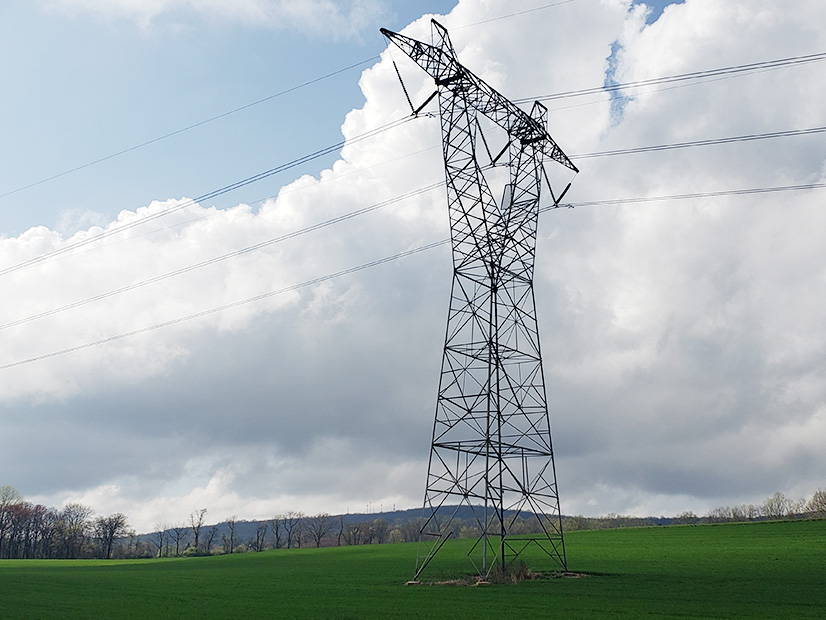FERC on Tuesday conditionally granted Rockland Electric Co.’s request for a new base return on equity (ROE) of 10.54% and a 50-basis-point ROE adder for its continued participation in PJM (ER22-910).
The commission also accepted Rockland’s proposed updated annual transmission revenue requirement (TRR) under PJM’s tariff, suspending it for five months to become effective Aug. 30, subject to refund.
Both the ROE and TRR will be subject to review in hearing and settlement judge procedures established by the commission.
Rockland’s service territory includes parts of three counties in New Jersey that border New York — Bergen (eastern division), Passaic (central division) and Sussex (western division). The company said it turned over operational control of its eastern division transmission assets to PJM in 2001, while Rockland’s central and western divisions, along with Orange and Rockland Utilities (O&R), are members of NYISO.
According to Rockland, New Jersey law does not mandate that it maintain membership in PJM or any other transmission organization. Rockland said its transmission systems with O&R have historically been operated as a single system, “irrespective of state geographical boundaries or regional operating authority jurisdiction,” and O&R “continues to design and operate them as a single integrated system.”
“Prior to joining PJM, Rockland contends that it did not have its own annual transmission revenue requirement or transmission rates on file with the commission,” FERC said in its order. “However, upon joining PJM, Rockland separated its annual transmission revenue requirement for its eastern division from O&R’s transmission rate.”
Rockland said it conducted a “variety of transmission projects to expand and improve the safety, reliability, and capacity” of the integrated transmission system from 2016-2020 that “justifies” it updating its transmission rates. The company said it derived its updated annual transmission revenue requirement by:
- calculating the 2020 annual revenue requirement for the integrated transmission system of $73,637,503 and
- multiplying it by the ratio of the 2020 Rockland system peak load of 395 MW to the 2020 integrated transmission system peak load of 1,416 MW.
Rockland said it applied the calculation with a reduction of $187,217, which “accounts for the annual passback of net excess accumulated deferred income taxes (ADIT),” coming up with an updated annual transmission revenue requirement of $20,354,318, equating to $51,530 per MW/year.
The company said the updated rates were just and reasonable because they are “derived from a methodology the commission has already approved” and “reflect a composite fixed charge rate composed of reasonable factors derived from reasonable calculations.”
Rockland also requested a 50-basis-point adder to its base ROE for continued participation in PJM, saying the commission approved the participation adder in its 2017 rate case. The company said its PJM membership “continues to be voluntary.”
The New Jersey Division of Rate Counsel argued that Rockland “improperly proposes to include the costs of facilities that are physically located within the footprint of and under the control of NYISO and are not available for use by PJM transmission customers.” The Rate Counsel also argued that Rockland’s load ratio share methodology “leads to a result in which a PJM transmission customer physically located in the PJM footprint is paying a portion of the costs of O&R facilities located within the NYISO footprint that NYISO operates and controls.”
“Rate Counsel argues if the combined O&R and RECO transmission facilities are an integrated transmission system, then the customers on the two systems are similarly situated and it would be unduly discriminatory for customers on an integrated transmission system to pay different rates as a result of where on the overall system they connect,” FERC said in its order.
Rockland responded by saying the Rate Counsel attempted to “inaccurately paint a picture that the integrated transmission system consists of two separate and distinct pieces that are operated and controlled by two different regional transmission organizations.”
The company also said that if the commission adopted the Rate Counsel’s rationale, it “may have widespread dramatic impacts on transmission ratemaking with respect to any transmission system that is owned by more than one utility.”
Commission Finding
FERC conditionally granted the request for a 50-basis point adder, saying it was consistent with Section 219 of the Federal Power Act and commission precedent.
“Rockland is a member of PJM, and there is no evidence in the record suggesting that its membership is not voluntary, such as evidence suggesting New Jersey law mandates Rockland maintains its membership in an RTO,” FERC said.
The commission conditioned its approval on the adder being applied to a base ROE shown to be “just and reasonable,” with the resulting ROE required to fall within “the applicable zone of reasonableness,” to be determined in the settlement judge procedures. Approval of the incentive was further conditioned on Rockland’s continued membership in PJM.
The commission found that its preliminary analysis suggested the proposed rate changes “may be substantially excessive” and would be “more appropriately addressed in the hearing and settlement judge procedures.”
FERC suspended the rates for five months and encouraged the parties to the proceeding to “make every effort to settle their dispute” before hearing procedures begin.
Commissioner Mark Christie issued a concurrence, saying an ROE “should reflect the market cost of equity capital, no more and no less, to the best of the regulator’s ability to determine, including pricing in risk.”
“An ROE adder, by definition, awards the utility more than the market cost of equity capital,” Christie said. “An ROE adder is literally an involuntary gift from consumers to a monopoly provider. While I recognize that ROE adders for RTO membership reflect current commission policy dating back several years, it is my hope we will finalize our proceeding initiated last year. This is particularly salient at a time when transmission charges are among the fastest growing components of consumers’ bills.”


